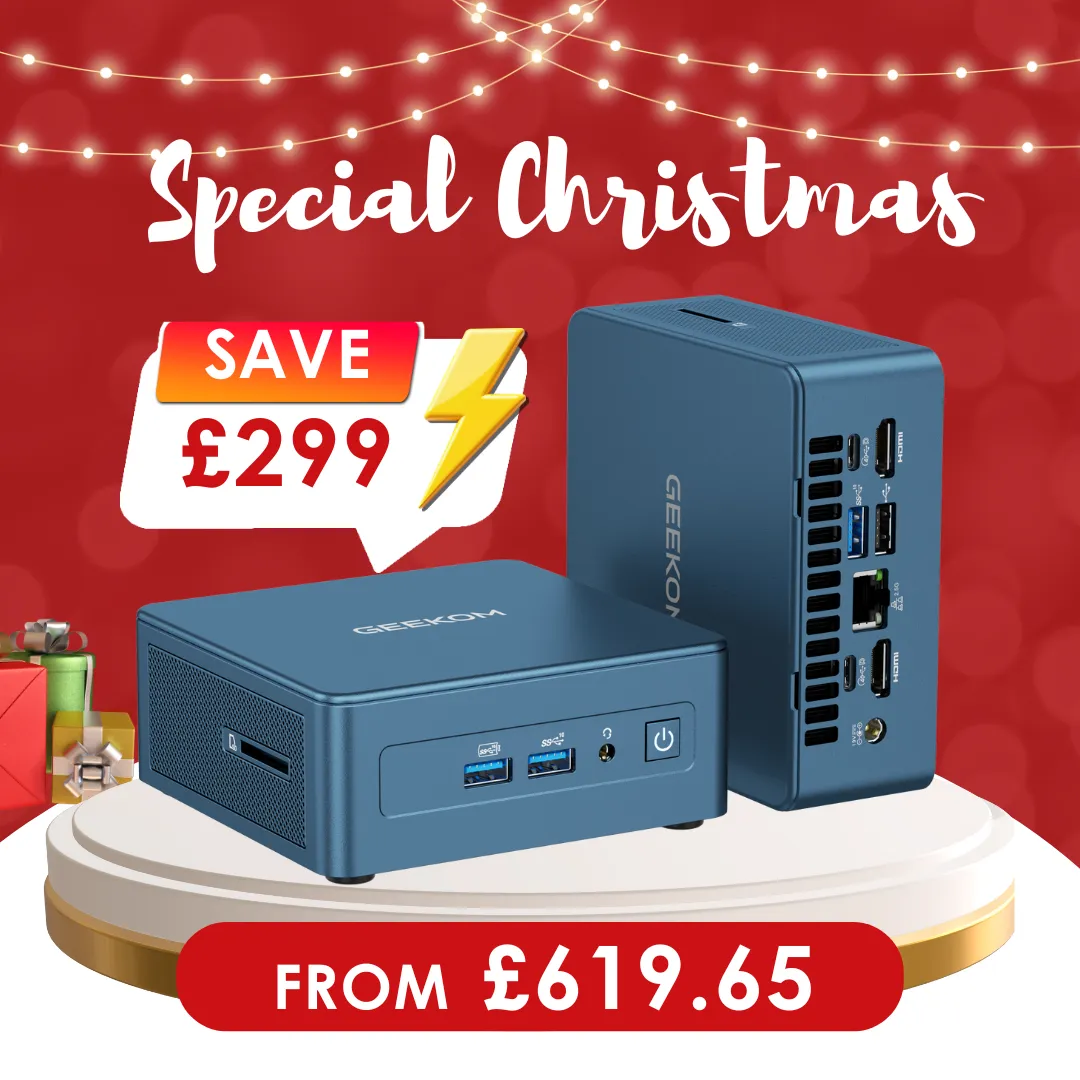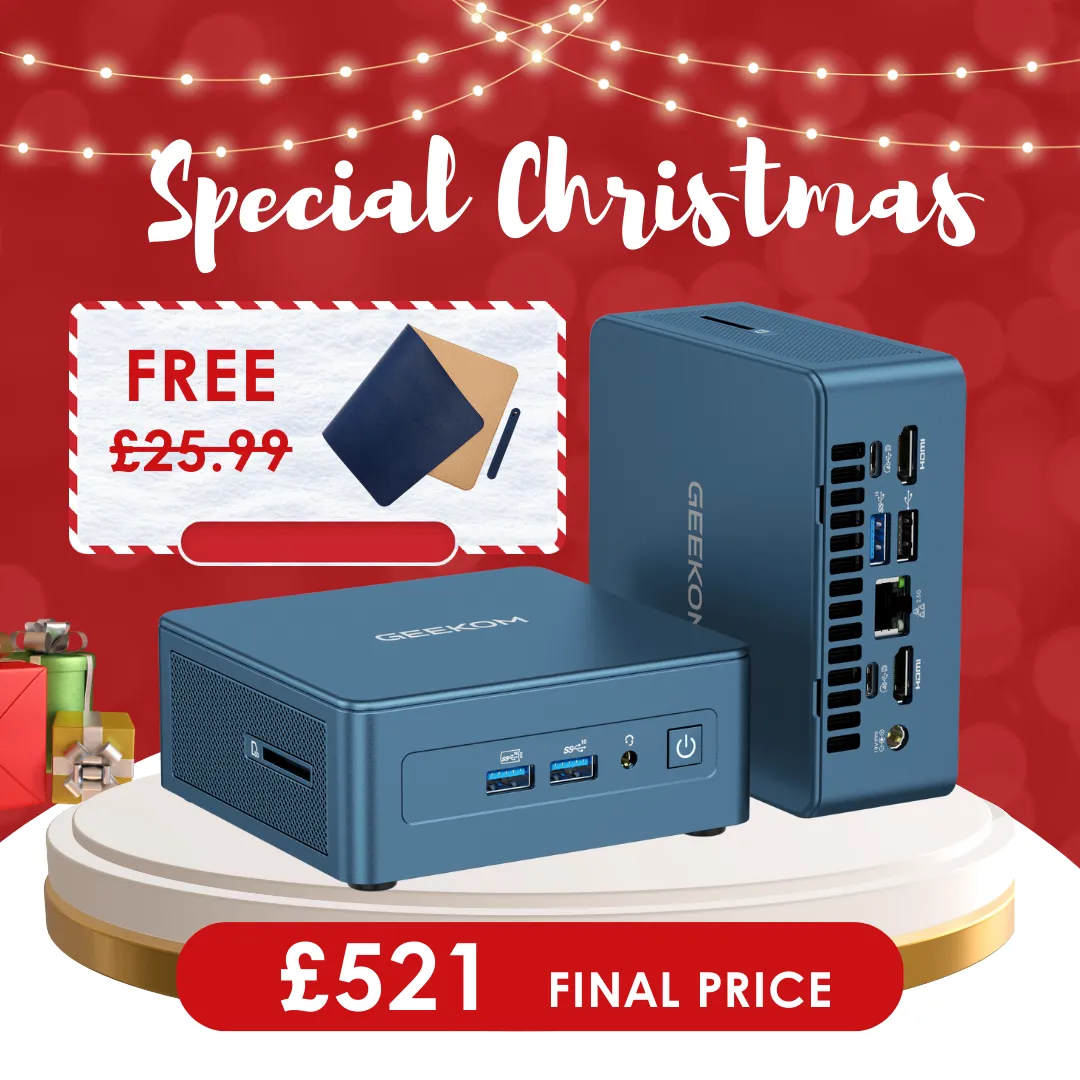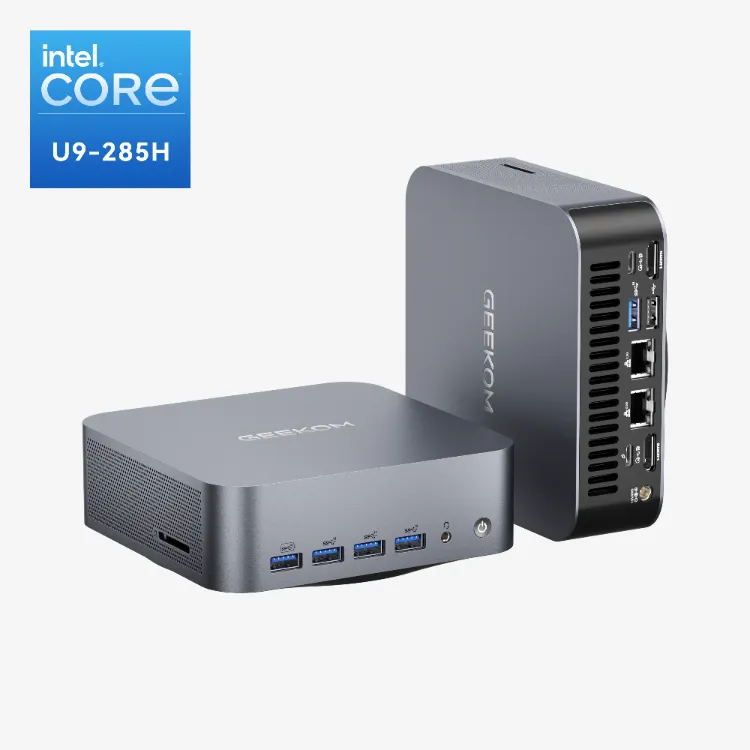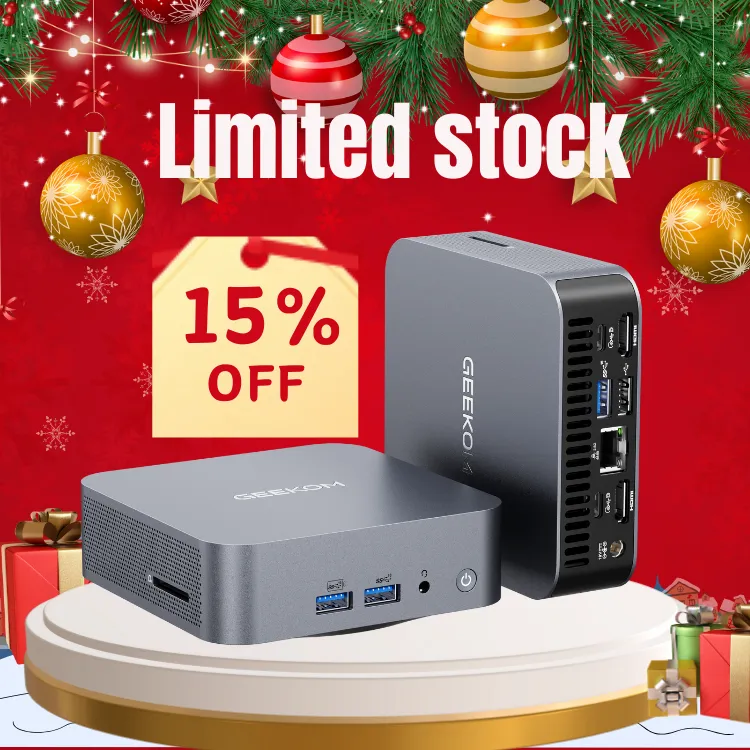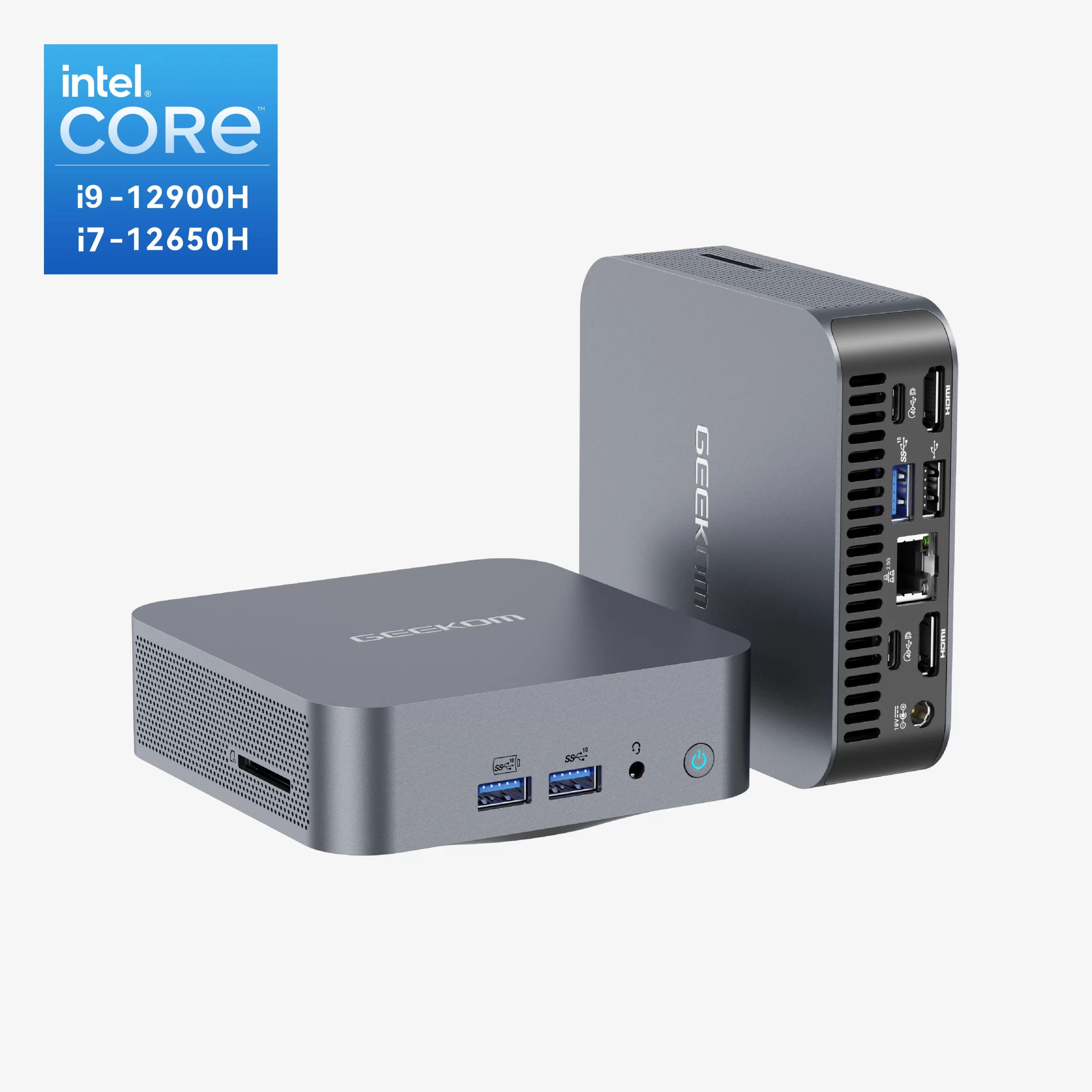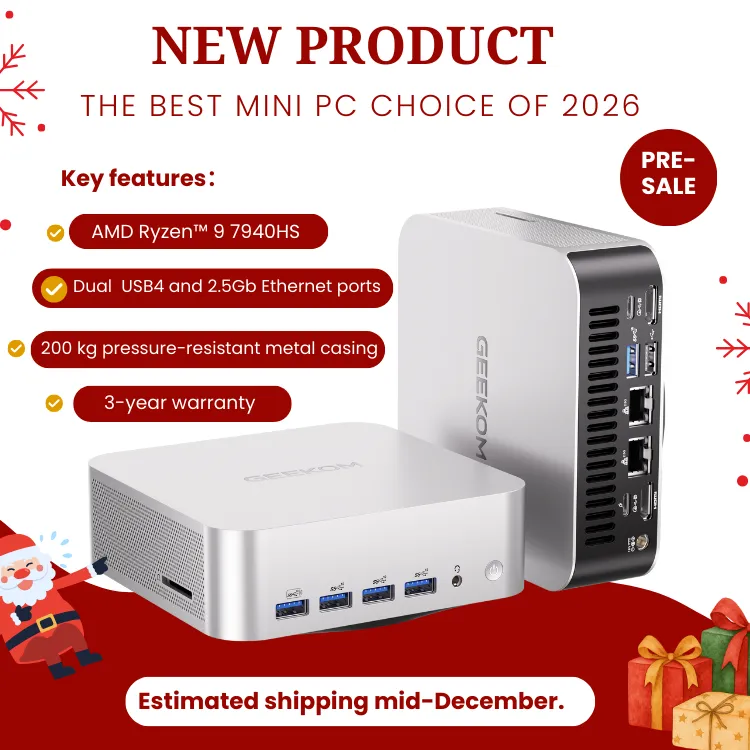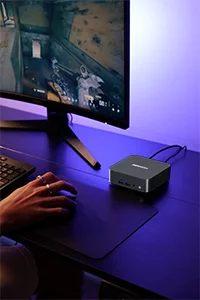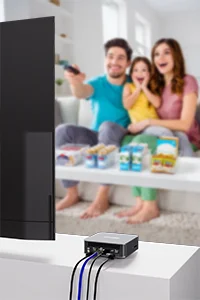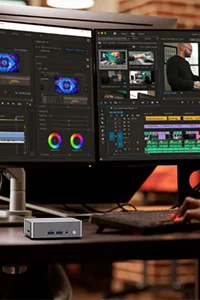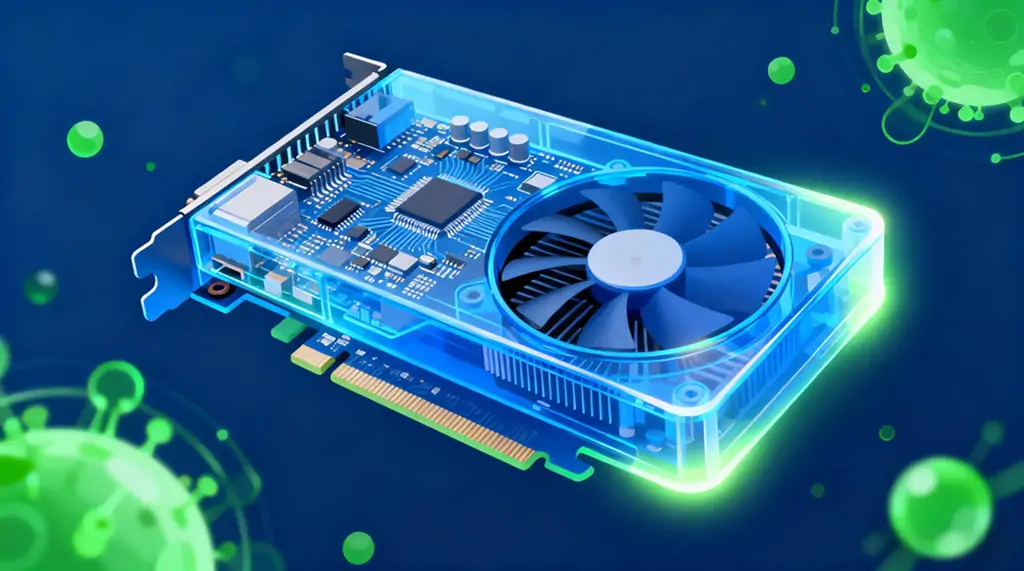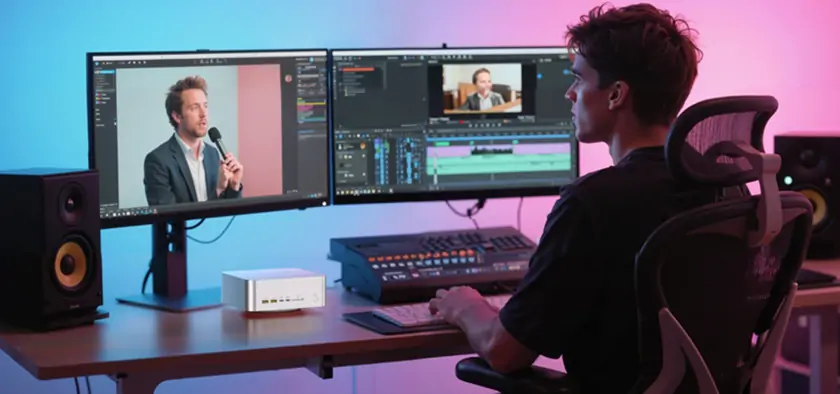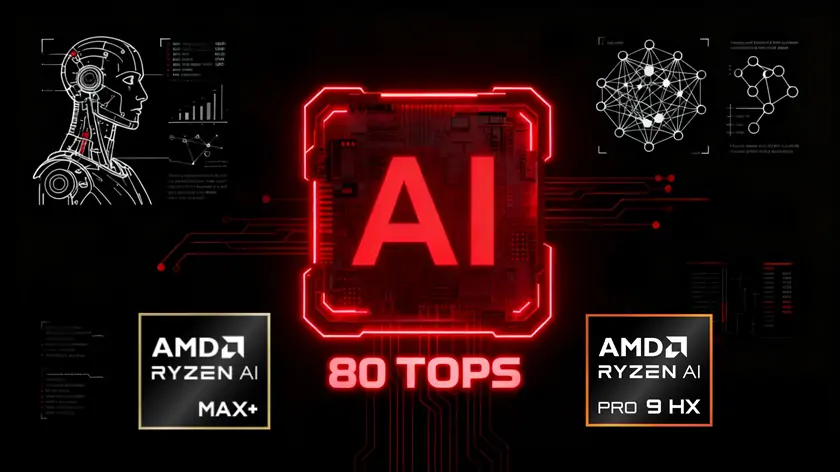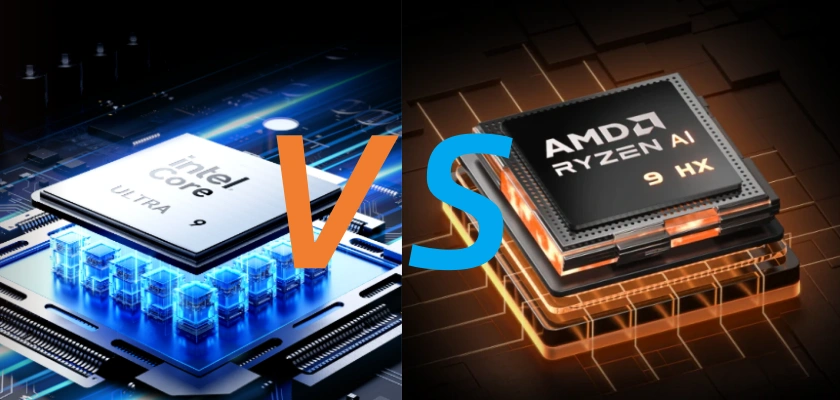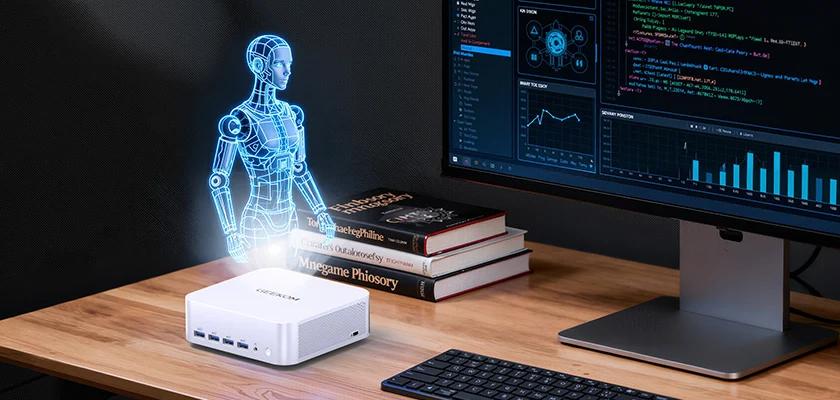You have a small PC case, like a slim desktop for your home office or a sleek small form factor (SFF) built for your living room. You like how compact and slim it is, but if you are starting to notice that your system’s built-in graphics are not as good as it could be. You know you need a dedicated graphics card if you want to play PC games for the most time, get your creative work done faster, or just run multiple high-resolution monitors. There is a catch, though: a normal, full-size GPU will not fit.
This is where the low-profile graphics card comes in handy. Imagine a powerful computer that fits inside a small chassis. It can be hard to pick the right one, but it does not have to be. For your specific setup, this guide will tell you everything you need to know to find the best low-profile GPU in terms of performance, price, and ease of use.
Low Profile Graphics Card vs. Full-Size GPUs
You probably picture a big, heavy part with a lot of fans and flashy RGB lighting when you hear the word “graphics card.” There you have it—a full-size or full-height card. Approaches to designing low-profile cards are very different. What makes them different is the height of the card’s metal mounting bracket and its overall size.
A low-profile bracket is usually only about 3.1 inches (79mm) tall, while a full-height bracket is about 4.7 inches (120mm) tall. Because of this, it can fit into thin desktop cases that can not hold its taller siblings. Still, that is not the only difference. Here is a quick summary:
| Feature | Full-Size Graphics Card | Low-Profile Graphics Card |
|---|---|---|
| Size | Taller and longer, designed for standard ATX cases. | Shorter height and often shorter length for compact cases. |
| Power | Often requires one or more external power connectors from the PSU. | Many models draw power directly from the motherboard’s PCIe slot (under 75W). |
| Cooling | Typically features robust cooling with two or three fans. | Uses smaller, more compact cooling solutions (single fan or passive heatsinks). |
| Performance | Generally offers the highest possible performance, including top-tier models. | Performance is balanced against size and thermal constraints; ranges from entry-level to strong mid-range. |
In a sense, you are giving up the raw, peak performance of the biggest cards in exchange for a size that fits in your PC. Technology has come a long way, though, and now a low-profile card can do even better than before.
Finding the Right Fit: What to Consider
Now that you know the basics, let us talk about specifically how to pick the best card for you. Not just any old thing will do; you need to find something that specifically meets your requirements. Consider these important points.
GPU Performance and Your Use Case
Are you going to use your PC for something? The level of performance you need will depend on the answer to this question. You would not buy a race car to drive to work every day, and the same is true here.
- Compact Gaming PCs: Your small gaming PC should have a graphics card that can run modern games at 1080p resolution and decent frame rates. Graphics cards with a great balance of performance and size, like the Nvidia GeForce RTX 4060 or the AMD Radeon RX 7600, are great choices here. These cards offer great 1080p performance, according to PCMag’s experts, making them perfect for standard gaming builds.
- Quiet PC Builds for Home Offices or Studios: A passively cooled low-profile card is a great choice for a quiet place to work. These cards do not have any fans because they use a heatsink to get rid of heat. Even though they are not great for gaming, they are great for running multiple displays, playing videos, and doing light work.
- Budget Workstations: For CAD, light video editing, or graphic design, a low-profile GPU can be a big step up from integrated graphics if you are a creative professional on a budget. If you want to work with bigger files and more complicated projects, look for a card with at least 4GB of VRAM.
- Servers or NAS Systems: With the AMD Radeon RX 6400, you can get a low-profile card that uses little power for a home server or Network Attached Storage (NAS) that needs to be able to transcode videos (for streaming media, for example). The computer does not need a big power supply because it does not use much power.
Read more about How to Build The Perfect Server with a Mini PC
Size and Compatibility: The Measurement Game
This is the most important step. You need to measure your case before you even think about adding a card to your cart. Take note of a few important things when you open it:
- Slot Height: Does your case need a half-height (low-profile) bracket? The vast majority of slim cases do.
- Card Length: Find the distance from the back of the case to the first thing that gets in the way, like a hard drive cage or cables on the front panel. As a way to help you compare, graphics card specs always list the card’s length.
- Card Width: Most low-profile cards are dual-slot, which means they will take up two expansion slots on your motherboard. Ensure there is space.
Power Requirements: Does Your PC Have the Juice?
One great thing about many low-profile cards is that they use little power. One important thing to check is whether the card needs a power connector on the outside. A lot of them, like the AMD Radeon RX 6400, get their power (less than 75 watts) from the motherboard’s PCIe slot. For pre-built systems from some brands, which often come with their own power supply units (PSUs) and do not need any extra cables, this is a huge plus.
Before you buy a more powerful low-profile card, you should find out if it needs an 8-pin or 6-pin power connector and, most importantly, if your power supply has one. Making sure your PSU can handle the extra load of a new GPU is always a good idea.
Video Output Options: Connecting Your Displays
Look at the back of the card last. How many ports does it have? Today’s cards usually have both HDMI and DisplayPort outputs. Cards with DVI ports are getting harder to find, but you might need one if you have an older monitor. For setups with more than one monitor, make sure the card has enough ports to support them all.
Key Features to Look For
Aside from the basics, a few technical details can help you tell models apart and get the best deal.
VRAM: The GPU’s Short-Term Memory
Video RAM (VRAM) is special memory that the GPU uses to store textures, frame buffers, and other graphics data. For higher resolutions and more detailed game settings, having more VRAM is important because it lets your GPU handle more data at once.
- 2GB-4GB: Enough for basic 1080p gaming and media tasks.
- 6GB-8GB: It is the best amount of RAM for most 1080p games, letting you use higher texture settings.
- 12GB or more: You can play games in 1440p, edit videos, and do other content-making tasks. For example, the Intel Arc B580 has 12GB of VRAM, which makes it a strong contender for creators on a budget.
Cooling Solutions: Active vs. Passive
With a small case, where airflow can be limited, cooling is even more important.
- Active Cooling: This uses a fan (or several fans) to move heat around. This is the most common way to fix the problem, and gaming cards that make more heat need it.
- Passive Cooling: Without any moving parts, passive cooling only uses a heatsink. It is completely silent, but only low-power cards should use it. A passively cooled card is the best way to make a quiet PC for a home theater or recording studio.
Driver and Software Support
What makes a graphics card work is its drivers, which are pieces of software that let it talk to your computer’s operating system. Driver updates from AMD, Nvidia, and Intel all add new features, fix bugs, and make the drivers run better. Before buying a card, make sure that it has stable, up-to-date drivers for your operating system. This is true no matter what it is (Windows, Linux, etc.).
Top Low Profile Graphics Cards for 2025
There are now more low-profile GPUs on the market than ever before, with options for every budget and level of performance. The people at Tom’s Hardware say that now is a great time to buy because prices and supplies have leveled off. Here are some of the best options currently available, ranging from affordable cards to gaming chips that will leave you in awe.
Budget Category
Radeon RX 6400
- 4GB GDDR6
- PCIe 4.0
- ~53W Power Draw
- Single Slot
GeForce GTX 1650
- 4GB GDDR6
- PCIe 3.0
- ~75W Power Draw
- Dual Slot
Budget Options: The Upgraders
The AMD Radeon RX 6400 is a great choice for people on a tight budget or who want to improve an older computer that is already put together. PCMag pointed out that its best features are that it does not need an external power connector and that it does not use a lot of power. This upgrade is very easy to install and can give you a big boost for 1080p media and gaming. The Nvidia GeForce GTX 1650 is another well-known card in this category. It works well with both new and old games and is popular in e-sports.
Mid-Range Category
Arc B580
- 12GB GDDR6
- PCIe 4.0
- Strong Ray Tracing
Radeon RX 7600
- 8GB GDDR6
- PCIe 4.0
- Efficient RDNA 3 Architecture
Mid-Range Options: The Sweet Spot
With the Arc series, Intel has made a strong debut, and the Intel Arc B580 is a great mid-range choice. It has a huge 12GB of VRAM, which is great for creative tasks and making sure your gaming will still work in the future. TechRadar’s experts have said that Intel’s newest products are a great value and work well. The Radeon RX 7600 from AMD brings the RDNA 3 architecture’s efficiency to the low-profile market. It offers great 1080p gaming performance without breaking the bank.
High-End Category
GeForce RTX 4060
- 8GB GDDR6
- DLSS 3
- Excellent Ray Tracing
High-End Options: The Powerhouses
The low-profile version of the Nvidia GeForce RTX 4060 is the clear winner if you want the best gaming experience in a small package. It comes with all the modern features you would expect from a high-end card, like DLSS 3 and powerful ray-tracing tools. With this card, your small PC can become a real gaming beast that can run the newest AAA games at high settings.
Read more about PCIe 4.0 vs 5.0: The Ultimate Guide
How to Install Your New Low Profile Graphics Card
You have now chosen the perfect card. Now comes the fun part: putting it together. Not to worry, this is a simple way to improve your PC. Here is a simple, step-by-step plan.
Get Prepared
- Power Down: Unplug your computer from the wall and turn it off completely. Protection first!
- Open the Case: Please remove the side panel of your PC case to access the internal components.
- Ground Yourself: Remove any static electricity by touching a metal part of the PC case. Electrodes that are sensitive can be hurt by static.
Locate the PCIe Slot
- On your motherboard, find the right PCIe slot. Most of the time, it is the longest one and closest to the CPU.
- You will need to take out any old cards that are already in there first. Take it out of the case by unscrewing it and pressing the small tab at the end of the PCIe slot. This will open it up. Pull the old card out slowly and straight out.
Prepare the New Card
- One full-height bracket is already on most low-profile cards when you buy them. You will probably need to switch it out for the low-profile bracket that comes with it. Taking out a few small screws is usually all it takes to do this.
Install the New GPU
- Remove the metal slot cover(s) on the back of your case where the new card will go.
- Align the gold connectors on the bottom of the new GPU with the PCIe slot on the motherboard.
- Gently but firmly press the card straight down until it clicks into place. You’ll feel it seat securely.
- Screw the card’s mounting bracket to the case to hold it firmly in place.
Power It Up
- If your card needs an external power connector, connect the right cable from your power supply to the card.
- Connect everything back to the case, put the side panel back on, and then turn on your computer.
Install Drivers
- It is normal for your screen to look a little off at first. Go to the website for the card’s maker (Nvidia, AMD, or Intel) as soon as your computer starts up to get the latest drivers for it. You will be good to go after a quick restart!
Common Issues and Quick Fixes
- No Display? The card should be fully in the PCIe slot, and any power connectors should be securely plugged in. Remember to connect your monitor to the new graphics card and not the video output on the motherboard.
- Card Doesn’t Fit? That is why we measure first! But if you are in a hurry, check again to see if there are any loose cables or other parts that are in the way.
- System Won’t Boot? It is possible that your power supply is not strong enough to handle the new card. Check the power needs of the card against the wattage of your PSU.
The Perfect Fit for Your Build
To pick the best low profile graphics card, you need to know what your system can do and what your needs are. To have a great time, you do not need the most expensive and powerful card on the market. There is a low-profile GPU out there for everyone, whether you want to make a small gaming PC, a quiet workstation, or just fix up an old office desktop.
You can make a choice that you will be happy with for years to come if you think about your use case, carefully measure your case, and know how much power it needs. When it comes to small computers, you no longer have to give up performance. You can have both a small footprint and the graphics power you need with the right low-profile card.



